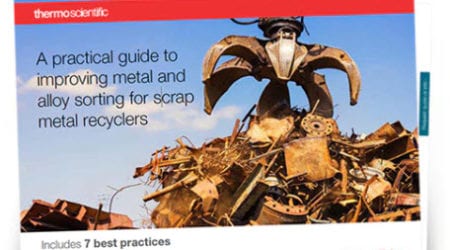Automotive catalytic converters (ACCs) play an essential role in exhaust systems to reduce the emission of harmful pollutants, such as carbon monoxide (CO), hydrocarbons (HC) and nitrogen oxides (NOx). A typical converter is ceramic-based and consists of a substrate made of cordierite (2MgO.2Al2O3.5SiO2) formed into many fine channels similar in appearance to a honeycomb. The substrate material is wash-coated with alumina (Al2O3) to which a combination of platinum group metals (PGMs) including platinum (Pt), palladium (Pd) and rhodium (Rh) as well as rare earth oxides such as CeO2, ZrO2 are added. The PGMs are responsible for the conversion reactions that turn pollutants into harmless gases.
The Association for Emissions Control by Catalyst AECC (AISBL) note that “Coatings systems have been developed which allow the maximum efficiency with optimum use of the precious metals platinum (Pt), palladium (Pd) and rhodium (Rh). The nanotechnology used in catalytic coatings involves stabilised crystallites, washcoat materials that maintain high surface area at temperatures around 1000°C, improved oxygen storage components and novel coating processes to optimise the distribution of the coatings. All play a part in the high efficiencies of catalysts.”
The organization also notes that precious metals used in emission control catalysts can be recycled, and recycling rates are increasing, further contributing to the affordability of future vehicles.
Recovery of precious metals by recycling spent ACCs represents a substantial economical value. Most recycled catalytic converters in the U.S. contain recoverable amounts of PGMs ranging from 1-2 grams for a small car to 12-15 grams for a big truck. The value of the recovered PGMs can vary from less than $100 to more than $1000. The 2023 USGS Minerals report on PGMs, estimates that about 110,000 kilograms of palladium and platinum was recovered globally from new and old scrap in 2022, including about 40,000 kilograms of palladium and 11,000 kilograms of platinum recovered from automobile catalytic converters in the United States.
Analyzing and Determining PGM Content
Manufacturers utilizing PGMs should analyze any material received to ensure the quality of the supplies they are receiving.
Energy-dispersive x-ray fluorescence (EDXRF) offers a quick and accurate determination of Pt, Pd and Rh content in spent ACCs. EDXRF is designed to analyze groups of elements simultaneously. This type of XRF instrumentation separates the characteristic x-rays of different elements into a complete fluorescence energy spectrum which is then processed for qualitative or quantitative analysis. Filters are positioned between sample and detector to improve signal, background reduction, and focus on certain regions of the spectra.
ACCs are inhomogeneous down to the microscopic level and require a thorough sample preparation before reproducible analysis is possible. A first step consists of grinding the material using a vibratory disk or ring and puck mill. It is worthwhile to check element characteristic line intensities as a function of grinding time and to assure that these have reached a constant value. This should not only be checked for the precious metals but also for the other elements present (i.e. Al, Zr, Ce, etc). Grinding sets made of tungsten carbide (WC) should be avoided because contamination of the sample by tungsten will result in characteristic lines of tungsten interfering with the lines of platinum.
Once ground, the powders can be pressed into a pellet with aid of a binder. Similar to geological samples, the inhomogeneous nature of ACCs will still lead to mineralogical effects. To avoid these, some laboratories prefer to fuse the sample but this leads to other difficulties related to the instability of precious metal oxides and their tendency to agglomerate or alloy with Pt/Au crucibles.
Read the study to see how EDXRF analysis measures up against ICP-OES to determine Rh, Pd and Pt concentrations in a set of 10 ACC samples.
Resources and Editor Notes
- Editor’s Note: This article, which was Part 4 of a 6-Part Series on PGMs, was originally published Feb 3, 2015, but has been updated and refreshed.
- Application Note: Analysis of automotive catalytic converter to determine precious metal content with ARL QUANT’X EDXRF Spectrometer
- Product Information: Thermo Scientific™ ARL™ QUANT’X EDXRF Spectrometer






Leave a Reply